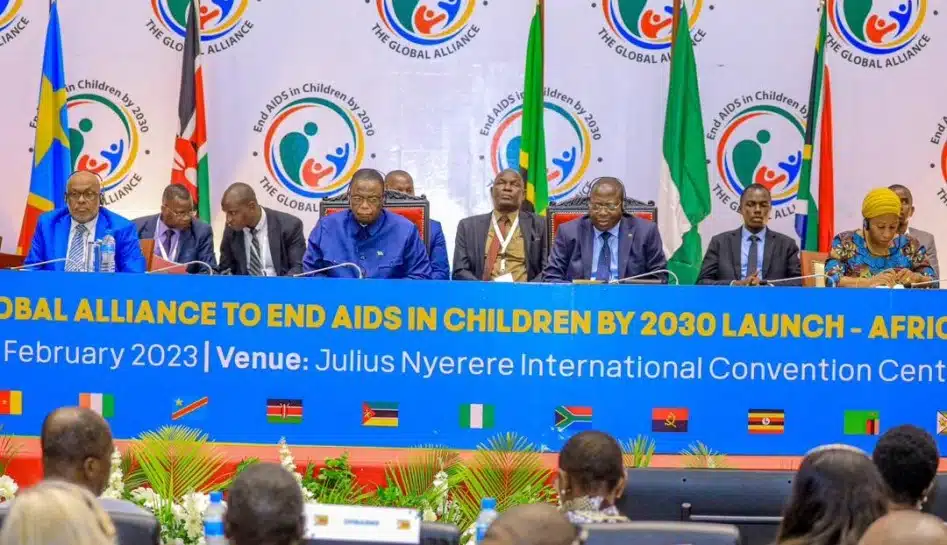The first ministerial meeting of the Global Alliance to end AIDS in children held in Tanzanian capital marks a step up in action to ensure that all children with HIV have access to life saving treatment and that mothers living with HIV have babies free from HIV
AIDS kills a kid every five minutes throughout the world, prompting widespread concern. Responding to the challenge, the ministers and representatives from twelve African countries vowed to eradicate the disease by 2030 at a meeting hosted by Tanzania on February 1.
The first ministerial meeting of the Global Alliance to end AIDS in children held in Dar-es-Salaam marks a step up in action to ensure that all children with HIV have access to life saving treatment and that mothers living with HIV have babies free from HIV.
The alliance will work to drive progress over the next seven years, to ensure that the 2030 target is met.
Only half (52 percent) of children living with HIV are on life-saving treatment, far behind adults of whom three quarters (76 percent) are receiving antiretrovirals.
In 2021,160 000 children newly acquired HIV. Children accounted for 15 percent of all AIDS-related deaths, despite the fact that only 4 percent of the total number of people living with HIV are children.
The Dar-es-Salaam Declaration on ending AIDS in children was endorsed unanimously.
Vice-President of the United Republic of Tanzania, Philip Mpango said: “Tanzania has showed its political engagement, now we need to commit moving forward as a collective whole. All of us in our capacities must have a role to play to end AIDS in children. The Global Alliance is the right direction, and we must not remain complacent. 2030 is at our doorstep.”
Twelve countries with high HIV burdens have joined the alliance in the first phase: Angola, Cameroon, Côte d’Ivoire, the Democratic Republic of the Congo (DRC), Kenya, Mozambique, Nigeria, South Africa, the United Republic of Tanzania, Uganda, Zambia, and Zimbabwe.
The work will centre on four pillars. One, early testing and optimal treatment and care for infants, children, and adolescents. Two, closing the treatment gap for pregnant and breastfeeding women living with HIV, to eliminate vertical transmission. Three, preventing new HIV infections among pregnant and breastfeeding adolescent girls and women. Four, addressing rights, gender equality and the social and structural barriers that hinder access to services.
UNICEF welcomed the leaders’ commitments and pledged their support. “Every child has the right to a healthy and hopeful future, but for more than half of children living with HIV, that future is threatened,” said UNICEF Associate Director Anurita Bains.
Winnie Byanyima, Executive Director of UNAIDS, sai the meeting has given them hope.
“An inequality that breaks my heart is that against children living with HIV, and leaders today have set out their commitment to the determined action needed to put it right,” Byanyima said.
WHO set out its commitment to health for all, leaving no children in need of HIV treatment behind. “More than 40 years since AIDS first emerged, we have come a long way in preventing infections among children and increasing access to treatment, but progress has stalled,” Dr Tedros Adhanom Ghebreyesus, WHO Director-General said. “The Global Alliance to End AIDS in Children is a much-needed initiative to reinvigorate progress.”
Peter Sands, Executive Director of The Global Fund said that in 2023, “no child should be born with HIV, and no child should die from an AIDS-related illness.”
Last year Botswana was the first African country with high HIV prevalence to be validated as being on the path to eliminating vertical transmission of HIV, which means the country had fewer than 500 new HIV infections among babies per 100 000 births. The vertical transmission rate in the country was 2 percent versus 10 percent a decade ago.
Read More : https://h-leads.com/bleak-lives-women-and-children-with-hiv/


















Add Comment